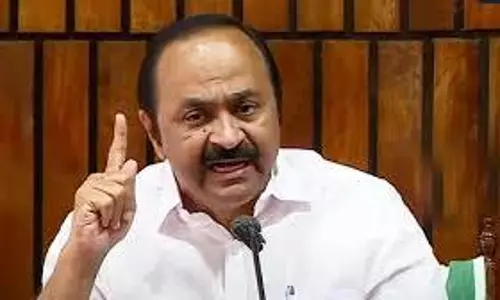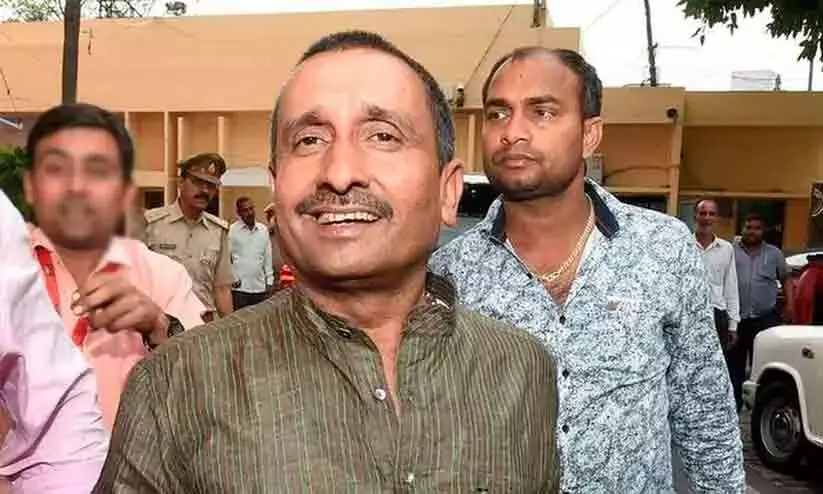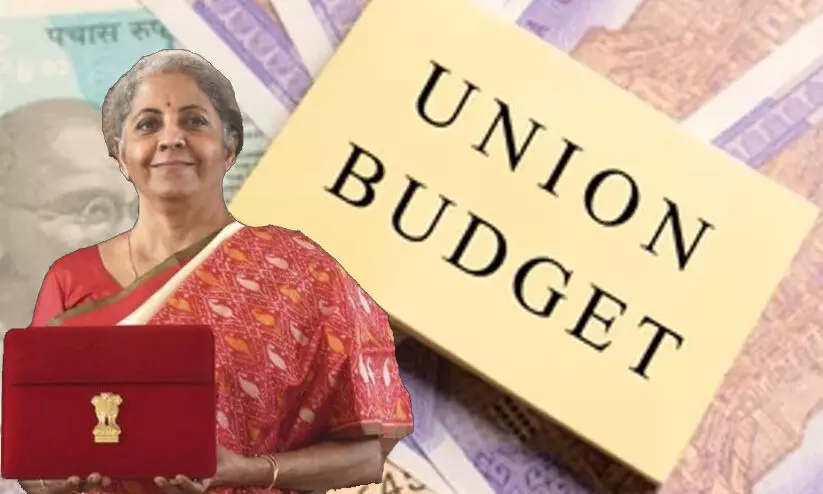
2024-2025 Union Budget: Implications and insights
text_fieldsUnion Finance Minister Nirmala Sitharaman presented India's Union Budget for the fiscal year 2024-2025 on July 23, 2024. This budget, set against the backdrop of a coalition government in its third term, reflects a blend of continuity and change in the government's economic strategies. This analysis delves into the key announcements, their potential impacts, and the broader implications for India's economy.
Revised Income Tax slabs: A relief for the middle class
The budget introduces significant changes to the income tax structure, aiming to provide relief to the middle class. Under the new tax regime, no tax will be levied on annual incomes up to Rs 3 lakh. The tax rates for various income brackets have been revised, with the highest rate set at 30% for incomes over Rs 15 lakh. Additionally, the standard deduction limit for salaried individuals has been increased to Rs 75,000 from Rs 50,000, and the deduction for family pensioners has been hiked to Rs 25,000 from Rs 15,000. These changes are projected to save a salaried employee up to Rs 17,500 in income taxes, providing much-needed financial relief amid rising living costs.
Fiscal deficit and borrowings: a prudential approach
The government has set a reduced fiscal deficit target of 4.9% of GDP for the financial year 2024-2025, down from 5.1% estimated earlier. Gross borrowings are projected to be Rs 14.01 lakh crore, with net market borrowings through dated securities expected to be Rs 11.63 lakh crore. This move signals the government's commitment to fiscal prudence while balancing expenditure and revenue generation. Reducing the fiscal deficit is crucial for maintaining macroeconomic stability and ensuring sustainable economic growth.
Support for higher education and employment
The budget introduces several measures to support higher education and employment. Financial support will be provided for loans up to Rs 10 lakh for higher education in domestic institutions. The government also plans to offer 12-month internship opportunities to 1 crore young people in the top 500 companies over five years. Additionally, a direct benefit transfer of one month's salary in three instalments will be provided to first-time employees earning up to Rs 1 lakh per month. These initiatives aim to enhance employability, provide financial support to young professionals, and address the issue of youth unemployment.
Agriculture and allied sectors: A Focus on Resilience
Agriculture, a critical sector for India's economy, takes centre stage in the budget with promises to transform agricultural research and boost the output of pulses and oilseeds. This focus is in response to the historical challenges faced by farmers, including low remunerative prices and policy-induced market disruptions. The budget aims to alleviate rural distress by promoting natural farming and introducing new missions to enhance productivity and sustainability in agriculture.
A significant allocation of Rs 1.52 lakh crore has been made for agriculture and allied sectors. The government plans to undertake a comprehensive review of the agricultural research set up to focus on productivity and climate-resilient varieties. New high-yielding and climate-resilient varieties of 32 field and horticulture crops will be released for cultivation. These measures aim to boost agricultural productivity, support farmers in adapting to climate change, and ensure food security.
Customs duty reductions: Supporting key sectors
The budget proposes reductions in customs duty rates on various products, including mobile phones and mobile printed circuit board assembly chargers. Additionally, three cancer treatment drugs and essential minerals for sectors like nuclear energy, renewable energy, space, defence, telecommunications, and high-tech electronics will be exempt from customs duty. These exemptions are expected to reduce the cost of critical imports, support domestic industries, and promote technological advancement.
Revenue Trends: A shift from corporate to personal income tax
The budget highlights a notable shift in government revenue sources, with the share of revenue from personal income tax surpassing corporate tax contributions. This shift follows the corporate tax rate cut implemented five years ago, which aimed to boost private investment and job creation. However, concerns have been raised about the effectiveness of this policy, with questions about the actual impact on investment and job creation. The increased reliance on personal income tax revenue indicates that the burden on individual taxpayers has grown, raising concerns about income inequality and economic disparity.
Addressing economic inequality
Income inequality remains a pressing issue in India. Studies indicate that the top 1% of the population holds a significant share of income and wealth. The government's policies over the past decade have been scrutinized for their impact on economic inequality. Despite impressive GDP growth rates, the benefits have not been evenly distributed, leading to a K-shaped recovery where the wealthy recover faster than the majority. The budget's recognition of economic distress and inequality sets the stage for potential policy adjustments to promote inclusive growth.
Support for small businesses
The budget emphasizes support for small and medium enterprises (SMEs) and rural development. SMEs, which contribute significantly to manufacturing output, exports, and employment, have faced challenges due to structural changes and economic shocks. The budget includes initiatives to alleviate stress in the SME sector and promote labour-intensive manufacturing. Recognizing the importance of SMEs in driving economic growth and job creation is a crucial step towards fostering a more inclusive economy.
Collaborative approach with states
The budget acknowledges the importance of collaboration between the central and state governments for effective policy implementation. Several initiatives, including industrial park development and competitive federalism, emphasize the need for partnership with states. The government aims to incentivize states for faster implementation of reforms through significant allocations, promoting economic development at the state level. This collaborative approach is essential for achieving sustainable and balanced economic growth across the country.
Infrastructure boost for Andhra Pradesh and Bihar
The budget allocates substantial funds for infrastructure development in Andhra Pradesh and Bihar, both crucial states for the BJP's coalition partners. Andhra Pradesh will receive Rs 15,000 crore for the development of Amaravati, while Bihar will benefit from multiple road connectivity projects, including the Patna-Purnea expressway and the Buxar-Bhagalpur highway. Additionally, Rs 26,000 crore has been allocated for a two-lane bridge over the Ganga in Buxar. These investments are expected to enhance connectivity, promote regional development, and potentially garner political goodwill in these states.
The 2024-2025 budget reflects a mix of continuity and change in the government’s economic strategy. While maintaining a focus on fiscal prudence and infrastructure development, it introduces measures to address social support, education, employment, and agriculture. The budget's recognition of economic distress and inequality sets the stage for potential policy adjustments and collaborative efforts with states to drive inclusive growth. As India navigates the complexities of economic recovery and development, the budget aims to lay the foundation for sustainable and equitable progress.
The budget's various measures, from tax reliefs and infrastructure investments to support for education and agriculture, indicate a comprehensive approach to addressing the multifaceted challenges facing India's economy. However, the effectiveness of these measures will depend on their implementation and the government's ability to foster an environment conducive to sustainable and inclusive growth.























